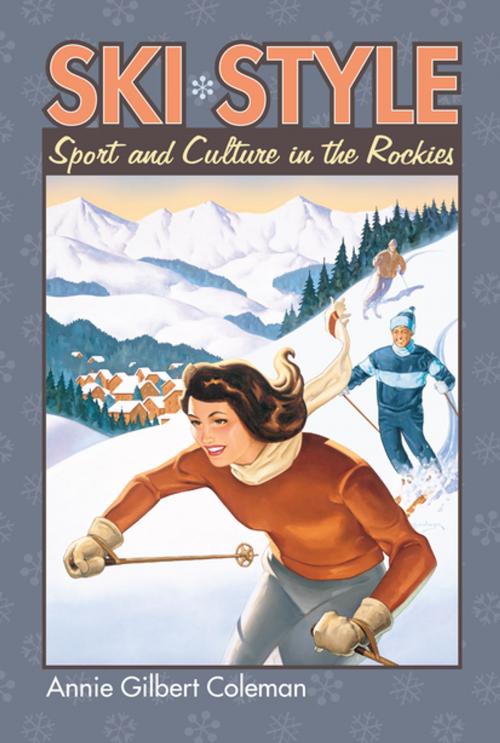Ski Style
Sport and Culture in the Rockies
Nonfiction, Sports, Winter Sports, Skiing, Social & Cultural Studies, Social Science, Cultural Studies, Popular Culture, History, Americas, United States, 20th Century| Author: | Annie Gilbert Coleman | ISBN: | 9780700623723 |
| Publisher: | University Press of Kansas | Publication: | October 10, 2004 |
| Imprint: | University Press of Kansas | Language: | English |
| Author: | Annie Gilbert Coleman |
| ISBN: | 9780700623723 |
| Publisher: | University Press of Kansas |
| Publication: | October 10, 2004 |
| Imprint: | University Press of Kansas |
| Language: | English |
Visitors to Colorado's famous ski resorts embrace alpine adventures, luxurious amenities, and a glamorous nightlife, all against a backdrop of towering mountains and high-drifted snow. Wherever they go in search of fresh powder, one thing is certain: skiing has become a major part of recreational sport and culture and, in the process, dramatically altered America's social, physical, economic, and imaginative landscapes.
Annie Coleman has written the first cultural history of skiing in the United States, telling how this European sport evolved into an American industry combining recreation, tourism, consumption, and wilderness—along with a solid dose of exhilaration and a dash of celebrity. She reveals how the meaning of skiing changed over the twentieth century, how sport and leisure in America came to be about status and style as much as about physical activity, and how modern consumer culture merged the mythic West with real western places.
Coleman traces skiing from its Norse roots and Alpine influences through the utility of ski travel in the winter Rockies to the rise of Colorado resorts. Much more than a history of the sport, her work explains how the recreation industry sold the experience of skiing and created mythic mountain landscapes with real problems—and a ski culture that exalts celebrity and status over the physical act of skiing.
Along the way, Coleman looks at bums, bunnies, betties, and everyone else who uses the sport to define who they are and how they fit in. Today's skiers are more diverse than they were half a century ago (though chances are they're wealthier), and even snowboarders have joined the very culture they once opposed—reviving places like Aspen through a subversive youth culture gone mainstream.
The allure of white powder at high altitudes, manicured ski runs designed to frame picture-perfect views, the illusion of danger—the American skiing experience is all of this and more. Extensively researched and engagingly written, Ski Style puts readers on the slopes—and in the lodges—to show what it's really all about.
Visitors to Colorado's famous ski resorts embrace alpine adventures, luxurious amenities, and a glamorous nightlife, all against a backdrop of towering mountains and high-drifted snow. Wherever they go in search of fresh powder, one thing is certain: skiing has become a major part of recreational sport and culture and, in the process, dramatically altered America's social, physical, economic, and imaginative landscapes.
Annie Coleman has written the first cultural history of skiing in the United States, telling how this European sport evolved into an American industry combining recreation, tourism, consumption, and wilderness—along with a solid dose of exhilaration and a dash of celebrity. She reveals how the meaning of skiing changed over the twentieth century, how sport and leisure in America came to be about status and style as much as about physical activity, and how modern consumer culture merged the mythic West with real western places.
Coleman traces skiing from its Norse roots and Alpine influences through the utility of ski travel in the winter Rockies to the rise of Colorado resorts. Much more than a history of the sport, her work explains how the recreation industry sold the experience of skiing and created mythic mountain landscapes with real problems—and a ski culture that exalts celebrity and status over the physical act of skiing.
Along the way, Coleman looks at bums, bunnies, betties, and everyone else who uses the sport to define who they are and how they fit in. Today's skiers are more diverse than they were half a century ago (though chances are they're wealthier), and even snowboarders have joined the very culture they once opposed—reviving places like Aspen through a subversive youth culture gone mainstream.
The allure of white powder at high altitudes, manicured ski runs designed to frame picture-perfect views, the illusion of danger—the American skiing experience is all of this and more. Extensively researched and engagingly written, Ski Style puts readers on the slopes—and in the lodges—to show what it's really all about.















